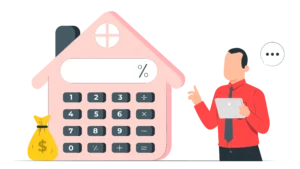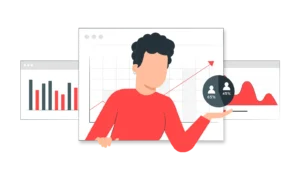Updated : Nov 11, 2025
Running an independent hotel or a small portfolio of properties is a demanding job. You wear a dozen hats, and often, the sophisticated strategies used by large corporate hotel chains feel out of reach. But here is the critical truth: hotel revenue management is no longer reserved for the big players with massive, dedicated teams.
This blog is your playbook. We’ve distilled expert insights on how small and mid-sized properties can implement a next-generation revenue strategy, giving you the power to compete and maximize every booking.
The Fundamentals of Modern Hotel Revenue Management

At its core, hotel revenue management is the art and science of selling the right room to the right customer at the right price, at the right time, through the right distribution channel, with the ultimate goal of maximizing revenues.
For independent hoteliers, the goal is not just occupancy—it’s profitable occupancy.
Core Revenue Management KPIs
Before you can optimize, you must measure. These three key performance indicators (KPIs) are the pulse of your hotel revenue management strategy:
- Average Daily Rate (ADR): ADR is the average price you charge for a room. It helps you track your pricing efficiency.
- Occupancy Rate : Occupancy rate is the percentage of available rooms that were sold. This measures volume.
- Revenue Per Available Room (RevPAR): Calculated as (ADR × Occupancy Rate) or (Total Room Revenue ÷ Total Available Rooms). RevPAR is the single most important metric because it accounts for both price and volume. A 7% increase in RevPAR is the typical result hoteliers see when implementing advanced revenue management capabilities.
Key Takeaway: Doning your pricing to hit a high occupancy rate at the expense of a low ADR is a losing game. A strong hotel revenue management strategy finds the perfect balance to maximize RevPAR.
Transform your hospitality approach today
Discover actionable strategies tailored for small hotel owners and managers creating unforgettable stays for your guests & expanding revenues for your hotel!
Start your 30-day FREE trial now!What Fuels Smart Pricing Decisions
The most significant shift in modern hotel revenue management is the sheer volume and speed of data required to make decisions. You need to move beyond simple historical reports and integrate real-time market intelligence.
You need to import all relevant data—competitive, historic, and future demand—into your pricing solution.
1. Historical Data: Understanding Your Past
Your booking history forms the foundation of your future forecast. You must analyze your previous performance —not just to see what happened, but also why it happened.
Actionable Insights to Extract:
- Booking Windows: How far in advance do guests book for specific days of the week or seasons? (Booking windows in Europe and urban USA often differ from leisure destinations.)
- Cancellation Rates: Identify patterns in cancellations and no-shows by rate code or channel.
- Revenue by Day/Week: Pinpoint specific days that consistently underperform or overperform to build better baseline prices.
- Rate Code Performance: Which rate codes (e.g., non-refundable, corporate, package) drive the highest profit?
2. Market-Level & Competitive Data (Comp Sets)
Your price is only as reasonable as the competition’s. But true market intelligence goes deeper than just monitoring your comp set.
What Modern Data Includes:
- Competitive Pricing (Comp Sets): Real-time monitoring of your direct competitors’ rates across all channels (OTAs, websites).
- Future Flight Demand: Tracking airline capacity and flight prices into your region, which is a major early indicator of inbound demand.
- Local Event Calendars: Awareness of local events – concerts, conventions, sporting events, and local holidays (critical for major European cities and US metropolitan areas).
- Weather Reports: Especially for seasonal and leisure destinations.
3. Web Shopping & Future Demand Data
This is where next-generation hotel revenue management systems shine. They don’t just react to bookings; they predict them by analyzing forward-looking data.
The Power of Prediction:
- Lost Opportunity Analysis: Seeing what searchers are looking for, even if they didn’t book with you.
- Pace of Pickup: Tracking the rate at which reservations are accumulating for a future date, relative to previous years. If the pace is ahead, you know to raise prices now.
- Geographical Information: Knowing where your potential guests are searching from can inform targeted promotions.
Intelligent Pricing: The Art of Dynamic Optimization

With all this data flowing, the question becomes: What is the optimal price to charge in order to maximize revenue?
For the independent hotelier, the only answer is dynamic pricing. This means your price is fluid, changing automatically multiple times a day based on real-time shifts in demand and competition.
Do’s & Don’ts for Dynamic Pricing
| DO’S | DON’TS |
| Do use Open Pricing. Price based on actual demand, not just pre-defined rate tiers. | Don’t assume discounts always increase profit. They can dilute revenue if offered when demand is already high. |
| Do leverage restrictions (minimum stay, closed-to-arrival) during peak periods to maximize value. | Don’t set and forget. Even with automation, you should review your forecasts weekly to ensure alignment with strategy. |
| Do use real-time competitive data to respond instantly when your competitors change their prices. | Don’t neglect your direct channel. Ensure your website always offers the best value proposition. |
Choosing Your Revenue Partner
The success of your hotel revenue management strategy hinges on the technology you use. As an independent operator, your system must save you time, not create more work.
When selecting a Revenue Management System (RMS), prioritize seamless integration.
Non-Negotiable Integration Points
- Property Management System (PMS): Your RMS must speak fluently with your PMS. This provides unified booking, analytics, and reporting. Without this two-way communication, your pricing strategy will be inaccurate or require constant manual intervention.
- Online Travel Agencies (OTAs) & Channel Manager: Real-time updates across Booking.com, Expedia, Airbnb (if applicable), and all regional distribution channels are essential to prevent overbooking and ensure rate parity.
- Sales & Marketing Platforms: Your pricing strategy should inform your marketing efforts. For instance, knowing a specific segment (e.g., long-stay leisure travelers in the summer) is price-sensitive allows your marketing team to launch a tailored promotion for that exact period, all aligned with your dynamic price floor.
Cross-Functional Integration is Key
A top-tier hotel revenue management system helps break down the operational silos that plague many small operations. 93% of hoteliers agree that integrating revenue management activities with sales, marketing, and guest services is a critical success factor.
How to Integrate Departments:
- Revenue & Marketing: Use pricing data to determine which channels to promote and when to run targeted offers (e.g., a last-minute push in a low-demand period).
- Revenue & Sales: Sales teams should use the RMS forecast to prioritize group bookings and negotiate contracts that meet minimum RevPAR thresholds.
- Revenue & Operations: Use demand forecasts to proactively staff housekeeping and F&B services, ensuring labor costs are optimized for predicted occupancy.
How PriceLabs Can Help Maximize Your Hotel’s Revenue
You need powerful tools without the complexity or high cost associated with enterprise-level solutions. This is precisely where PriceLabs shines and empowers the “little guy” to compete.
PriceLabs is designed to automate the heavy lifting of hotel revenue management so you can focus on your guests.
PriceLabs Empowers Your Strategy By:
- Dynamic and Personalized Pricing: Our algorithms instantly process millions of data points—from competitor rates and flight search data to local event impact—to generate the optimal price for every night for the next 365+ days. This is the definition of next-generation intelligent pricing.
- Seamless Integration: PriceLabs connects effortlessly with leading Property Management Systems (PMS) and Channel Managers across the USA and Europe, ensuring your dynamic rates are instantly pushed to every single booking channel.
- Market Data at Your Fingertips: Our customizable Comp Set analysis and market-level insights give you the competitive edge required to confidently adjust your pricing strategy against even the largest hotel chains.
- Empowering User Controls: Unlike rigid systems, PriceLabs gives you full control. You can set minimum prices, override recommendations for special events, and apply specific rules based on length of stay, allowing you to tailor the automated system to your unique property goals.
By using a data-driven tool like PriceLabs, you save valuable time, reduce manual pricing errors, and ensure that your property captures the maximum possible RevPAR every single night.
Wrapping Up
The future of hospitality is data-driven. For independent hoteliers, success isn’t about working harder; it’s about making smarter, automated decisions. Embracing a modern hotel revenue management strategy, centered on dynamic pricing and seamless technology integration, is your most powerful weapon against the large chains.
Frequently Asked Questions (FAQs)
What is the biggest challenge for independent hoteliers in revenue management?
The biggest challenge is often data processing and speed. Independent hoteliers often lack the time or tools to manually track real-time competitor rates, future demand indicators, and historical booking patterns. This leads to slow rate adjustments and lost revenue opportunities. Modern RMS tools solve this by automating the data aggregation and price optimization process.
Why is dynamic pricing superior to tier-based pricing?
Dynamic pricing is superior because it ensures your rate is always aligned with instantaneous shifts in supply and demand. Tier-based pricing (e.g., setting High, Medium, and Low rates) is rigid. It cannot capitalize on micro-demand spikes (such as sudden weather changes, concert ticket sales, or a competitor selling out). Dynamic pricing, powered by smart algorithms, maximizes profit by finding the optimal rate for every available room night.
What is a Hotel Revenue Management System (RMS)?
A Hotel Revenue Management System (RMS) is a software solution that leverages advanced algorithms and analytics to forecast demand, dynamically set prices, and optimize distribution channels to maximize revenue. For small hotels, an RMS like PriceLabs integrates with your PMS and Channel Manager to automate rate adjustments across all your booking sites, ensuring rate accuracy and maximizing RevPAR.








